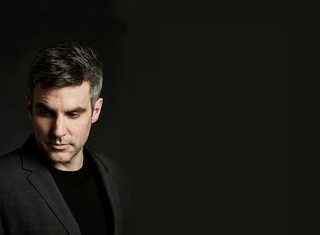|
Back
The City First, The Universe Later New York
Isaac Stern Auditorium, Carnegie Hall
04/16/2016 -
Kevin Puts: The City (Film by James Bartolomeo) (New York premiere)
Gustav Mahler: Symphony No. 5 in C-sharp Minor
Baltimore Symphony Orchestra, Marin Alsop (Music Director and Conductor)

M. Alsop (© Kim Thomson)
”We are a species suffering the pains of its adolescence. Let us have the resolve, the compassion and the foresight to force our own evolution to a place of reason and harmony”.
Kevin Puts, composer of The City
Conductor Marin Alsop’s orbit is wide, but the Baltimore Symphony Orchestra concerts here frequently embrace the magnitude of her birthplace Manhattan. Ms. Alsop's one similitude–whether in Honegger’s Jeanne d’Arc or Bernstein’s Mass or last night’s Mahler Fifth Symphony–is a drive, a vigorous baton wielded to get the musical job done with as much intensity and vigor as possible.
The Baltimore Symphony Orchestra, celebrating its 100th anniversary this year, has never been placed in those artificial listings of “Five Best Orchestras” but they do have a muscularity, a tough sound which can be sensitive when necessary, but always filled with energy. Their past conductor, David Zinman, gave them the European panache, but Ms. Alsop is the ideal conductor to harness that energy.
Which she certainly did last night. Ms. Alsop may not have the grandiose sweep or warmth of a Bernstein or Walter. But she traced that faltering uncertain structure the first funereal movement of Mahler’s Fifth with unfaltering mastery, helped to no end by trumpet player Andrew Balio. The tempos, rubati and sudden changes seemed to be felt rather than calculated, certainly the mark of an experienced Mahlerian.
With memories of Visconti’s Death In Venice, I always fear the Adagietto, a movement good enough in its own right but too frequently performed–against the composer’s wishes–alone. No, it is a so integral a part of the Symphony, and Ms. Alsop gave it an emotional intensity. That rising fourth rose seamlessly from violins to cellos in perfect pattern.
As for Mahler’s finale, one does not need a superior conductor to triumph here. Like the best of Shakespeare and Sophocles, the anthem–by far the most triumphal music of the 20th Century–sings itself. Ms. Alsop, though, took the Baltimore ensemble to its peak. Perhaps her strings were stronger and harder rather than richer. But that was one of the characters of the ensemble, resulting in an exultant fiercely celebratory climax.

K. Puts (© Courtesy of the artist)
The evening opened with another celebration, this a double anniversary of the Baltimore Symphony Orchestra centenary and Carnegie Hall’s first 125 years. Thus, the two groups commissioned a work by Pulitzer Prize-winner Kevin Puts, now at Baltimore’s Peabody Conservatory. He is a splendid composer, whose Credo played by the Miro Quartet here was a jubilant work, and whose Inspiring Beethoven is a luscious homage.
Here, though, he had a collaborator, the noted filmmaker James Bartolomeo. The result, inevitably, was that Mr. Puts had written film music. And that, by definition, is rarely to the benefit of the composer.
Outside of the Eisenstein-Prokofiev quasi-opera collaborations, the visual inevitably trumps the aural. If the music is good, you hear it as background. If it follows the action, then it becomes Mickey Mouse music.
Now that is not true of video-directors, whose tricks are so forceful that the listener happily turns back to less tricky music. But Mr. Bartolomeo is a real movie-maker. His film about Baltimore, its present, past, diversity, wars and peace, was seamlessly segued into a marvelous silent documentary. Its attraction was riveting, the few cliches were tolerable, the changes of color to black-and-white, century to century had the naturalness of the natural story-teller.
This was not video magic; rather, it resembled Robert Flaherty’s Louisiana Story, with its folksy Virgil Thomson score.
The City called for a simpler music, and Mr. Puts is a very complex composer. He did try to give his own very complex, extremely deft inspiration here, but his best movements were pure movie music–introductory percussion beats aligned with the rapid opening images, a solo mournful trumpet note during the riots–almost cliches. Yet Mr. Puts was also attempting a symphonically structured score, and Mr. Bartolomeo’s movie was so absorbing in its people, architecture, history and vivid cityscapes, that I could barely attend to Mr. Puts’ probably excellent music.
As Mozart’s erudite poet sublimated his genius to become an Über-hack librettist for Figaro and Giovanni, perhaps Mr. Puts might have done better with a less accomplished collaborator.
Never mind. The movie was wonderful, and Ms. Alsop conducted with her usual strong motivation. Mr. Puts is not Mahler, but he is young, and he is already seizing both world enough and time.
Harry Rolnick
|